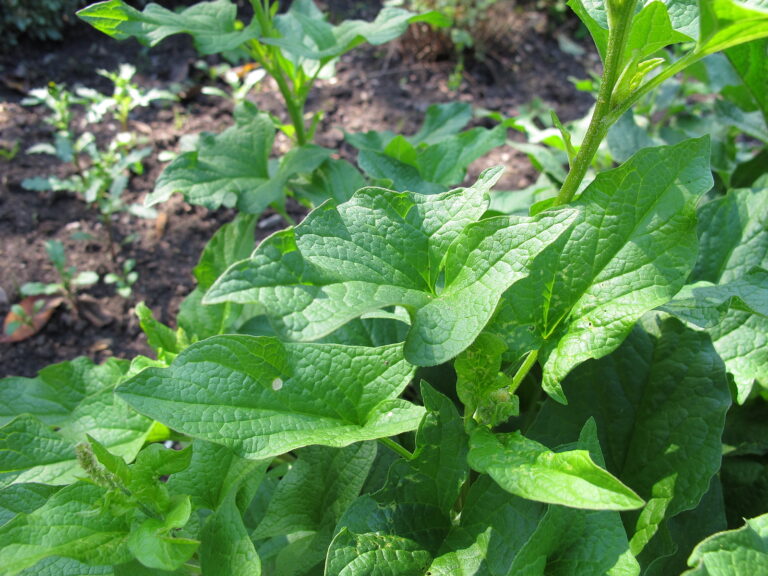When to Plant Napa Cabbage in Spring and Fall
Knowing exactly when to plant Napa cabbage is the key to harvesting tight, sweet, well-formed heads. Napa cabbage is a cool-season crop that thrives when temperatures stay between 50°F and 75°F. After more than 30 years of growing Napa cabbage in my year-round garden in Northern California, I’ve learned that timing is everything: plant too early and seedlings stall in cold soil; plant too late and heat triggers bolting. This guide will help you schedule your spring and fall plantings with confidence, no matter where you garden.
Why Timing Matters for Napa Cabbage
Napa cabbage (Brassica rapa subsp. pekinensis) grows best when days are cool and stable. Temperature swings, warm spells, or hot soil can signal the plant to send up a flower stalk instead of forming a head. Early-season stress—cold snaps, inconsistent watering, or slow growth—also increases bolting risk.
Planting at the right moment ensures:
- Fast, steady growth
- Crisp, juicy heads
- Fewer pest and disease problems
- Strong harvests before heat or frost arrive
When to Plant Napa Cabbage in Spring
Spring planting requires working with your climate’s warming trend while staying ahead of rising summer temperatures.
Start Indoors
- Start seeds indoors 4–6 weeks before your last expected frost.
This gives seedlings time to grow without sitting in cold soil outdoors.
Transplant Outdoors
- Move seedlings into the garden 1–2 weeks before the last frost, once nighttime temperatures remain above 45–50°F.
This early transplanting window helps Napa cabbage mature before the first significant heat wave.
Direct Sowing (Cool Climates Only)
If spring warms slowly where you garden:
- Direct sow as soon as the soil reaches 45–50°F and is workable.
- Thin seedlings to 12–18 inches apart.
My Spring Planting Rule (Based on Experience)
In my Sonoma Valley garden, I aim to plant Napa seedlings by early March, ensuring they mature before May heat arrives. Gardeners in cooler climates can plant later; those in warmer regions must start even earlier.
When to Plant Napa Cabbage in Fall
Fall is the best season for Napa cabbage—cooler temperatures, fewer pests, and slower bolting.
Start Indoors
- Start seeds 10–12 weeks before your first fall frost.
This ensures transplants are ready for the cooler days of late summer.
Transplant Outdoors
- Transplant 6–8 weeks before first frost, usually when daytime highs begin to drop below 80°F.
This timing allows Napa cabbage to mature during the cool, steady weather it prefers.
Direct Sowing
- Sow directly 8–10 weeks before frost, thinning once plants are 3–4 inches tall.
Why Fall Plantings Excel
After three decades of growing Chinese cabbage, fall crops almost always outperform spring ones. The cool evenings, shorter days, and fewer pests create perfect conditions for heading.
Climate-Based Planting Guidelines
Cool Climates (Northern regions)
- Spring: Start seeds indoors early; transplant soon after frost.
- Fall: Plant relatively early—cool weather arrives fast.
Mild Climates (Pacific Coast, Pacific Northwest, Mid-Atlantic)
- Spring: Plant as early as soil permits.
- Fall: Ideal season; you may get two successions.
Warm Climates (South, Southwest)
- Spring: Very early planting required—January to early March.
- Fall/Winter: Best season; grow September through February.
Signs You’re Planting at the Right Time
- Soil is workable and above 45°F
- Days are consistently cool
- Nights are not freezing (or are lightly protected)
- Heat waves are not imminent
- Seedlings grow steadily without stress
If plants bolt, it’s almost always a sign of poor timing or temperature stress.
Final Thoughts
Planting Napa cabbage at the right moment—early in spring or well ahead of frost in fall—makes all the difference between a loose, bitter crop and tight, sweet, market-quality heads. After decades of growing Napa cabbage, fall remains my most dependable season, but well-timed spring crops can be just as rewarding. Use your frost dates, soil temperature, and seasonal patterns as guides, and you’ll harvest beautiful Napa cabbage every year.
Napa Cabbage Learning Hub
Start here: The Ultimate Guide to Growing Napa Cabbage
Napa Cabbage Planting & Timing
- When to Plant Napa Cabbage in Spring and Fall
- Napa Cabbage Planting Calendar: Month-by-Month Guide
- Best Soil and Site Conditions for Napa Cabbage
Napa Cabbage Starting & Transplanting
- How to Start Napa Cabbage Indoors Under Lights
- Direct Seeding vs. Transplanting Napa Cabbage: Pros and Cons
- How to Harden Off and Transplant Napa Cabbage for Strong Growth
Napa Cabbage Care
- Watering Napa Cabbage: How Much and How Often
- How to Fertilize Napa Cabbage for Big, Tight Heads
- Protecting Napa Cabbage from Heat, Bolting, and Sun Stress
Pests & Diseases
Harvest & Storage
- How to Harvest Napa Cabbage Without Splitting or Cracking
- Storing Napa Cabbage for Weeks: Simple Home Preservation Tips
Containers & Small Spaces
Varieties
- Best Napa Cabbage Varieties for Home Gardeners
- Short-Season Napa Cabbage Varieties for Cool Climates
Companion Planting





